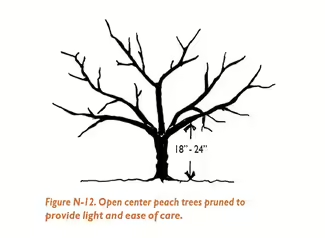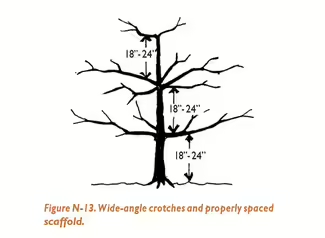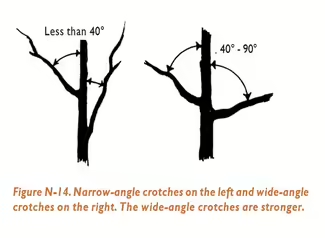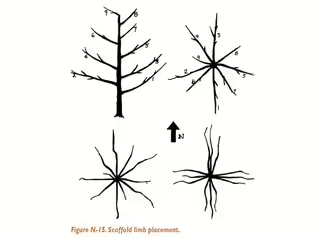Pruning is the judicious removal of parts of plants to increase their usefulness. It is not a mere haphazard cutting of wood, but a skill acquired through knowledge of the plant to be pruned, practice, and observation of the results of pruning. The primary purposes of pruning are to:
- Improve the quality and size of the fruits.
- Develop a strong tree that will carry a load of fruits.
- Facilitate cultural and harvesting operations.
- Adjust or partially control size and shape of trees.
Fruit trees, if unpruned, become tall, dense, and unmanageable. Fruit production tends to be limited to the outer edges and the top, where there is more sunlight. The interior of the tree becomes a tangled mass of branches with very little productive fruiting wood. An unpruned tree is also difficult to spray and harvest. Though total yield produced by unpruned trees may be adequate, the size, color, and quality of the fruits usually are not.
All of the pruning discussion here pertains to portions of the tree above the ground, except for the suggestions on root pruning at planting time.
You may be hesitant to prune because of the fear of “ruining the tree.” Trees, like most plants, have the ability to replace removed parts. Thus, if an unwise cut is made, the tree will eventually succeed in replacing the removed part. The greatest mistake usually is to do no pruning. Nevertheless, since replacing a removed branch may take years, the pruner should have good reasons for making a particular cut.
There is no right or wrong system of pruning using basic pruning principles and an understanding of plant growth. Fruit growers develop pruning systems adapted to their own operations. Home gardeners also may modify pruning systems to fit their own needs.
A major consideration in pruning is that each tree is an individual, and no two trees grow and develop exactly alike. This can be especially frustrating in trying to develop a desirable framework in young trees. Probably the best solution is a compromise. Know the ideal and modify it enough to suit the individual tree, but still develop the general shape of the system selected.
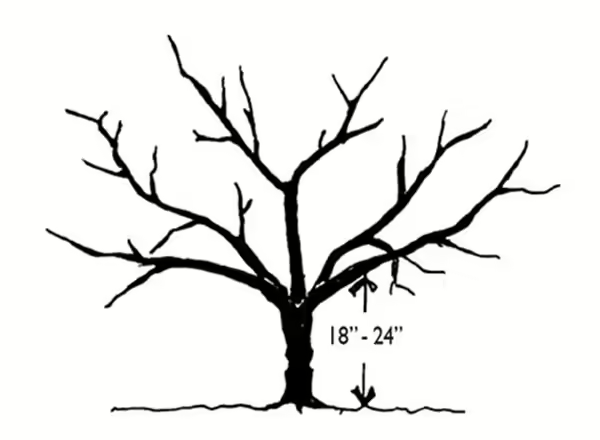
Pruning suggestions in this section deal with the two most common tree training systems, the central-leader system and the open-center system.
- The central-leader system is suggested for apples, pears, European-type plums, and sweet cherries.
- The open-center system is suggested for peaches, nectarines, and Japanese-type plums (N-12).
- Apricots and sour cherries may be trained to either of these systems, but the open-center system is easier to develop and maintain for both fruits.
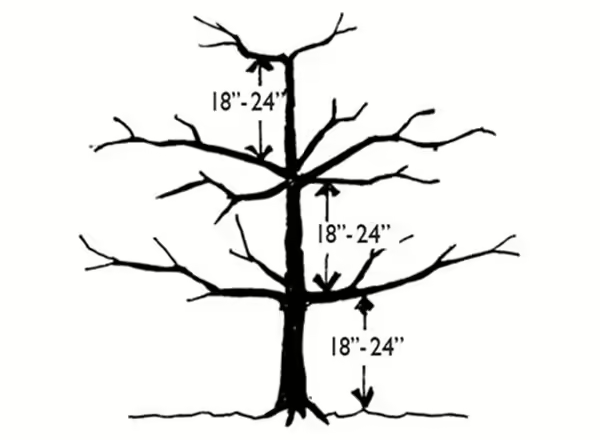
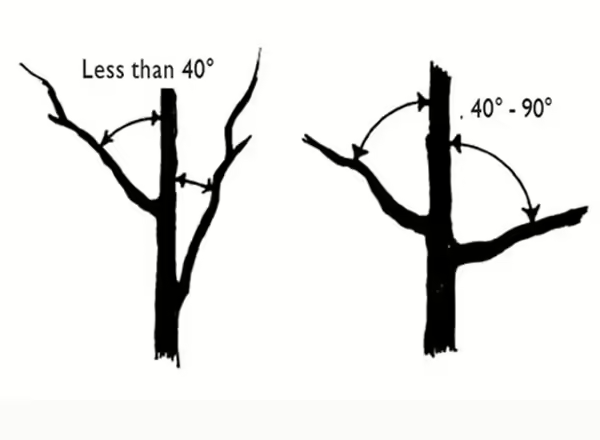
Properly shaped, an open-center (or vase) tree develops into a low-headed tree to facilitate orchard operations. The open center allows good light penetration for fruiting of inner branches and coloring of fruits.
Basically, an ideal standard peach tree trained and pruned to the open-center system has the following characteristics:
- A single trunk is 18 to 30 inches high.
- Two, three, or four scaffold branches are all located close together vertically near the top of the trunk and kept about equal in size by pruning.
- All scaffold branches form a crotch angle of 40 to 90 degrees with the trunk and are spaced as uniformly as possible from each other, none pointing directly southwest (Figures N13 and N14).
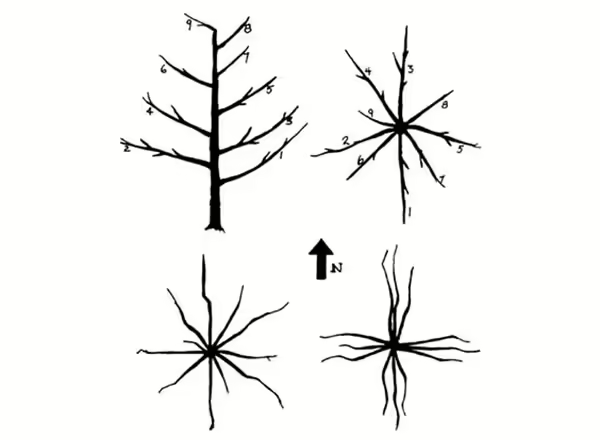
An ideal semi-dwarf or spur-type apple tree trained and pruned to the central-leader system has the following characteristics:
- One main stem (trunk) is 5 to 8 feet high.
- The lowest branch (scaffold) is 18 to 22 inches from the ground and not on the southwest side of the tree.
- Five to twelve scaffold branches are spaced either 4 to 8 inches apart vertically along the trunk or in clusters (Figure N-15). The clusters may contain from 2 to 4 branches and should be spaced 18 to 24 inches apart vertically along the trunk. More commonly, a combination of the two systems may be used with some branches in clusters and others not in clusters.
- The crotches of the scaffold branches form 40- to 90-degree angles with the trunk.
The number and spacing of scaffold branches and the height of the central leader vary with the type of tree (dwarf, semi-dwarf, or standard), with the type of fruit (apple, cherry, pear, or plum), and with the number and spacing of scaffolds. Properly shaped, a central-leader tree has low, well-spaced branches and well-distributed fruiting wood and is close enough to the ground to facilitate the various orchard operations.
